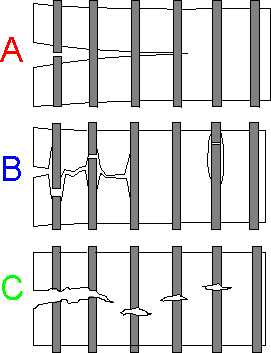 Multi-component materials demonstrate high crack resistance. Mechanical properties of the components and their bonds define the crack resistance of the composite, such as tensile strength of matrix (A - the property is low), bond strength (B), tensile strength of fibers (C). A matrix with higher ductility and high-strength fibers is peculiar to high crack resistance.
Multi-component materials demonstrate high crack resistance. Mechanical properties of the components and their bonds define the crack resistance of the composite, such as tensile strength of matrix (A - the property is low), bond strength (B), tensile strength of fibers (C). A matrix with higher ductility and high-strength fibers is peculiar to high crack resistance.
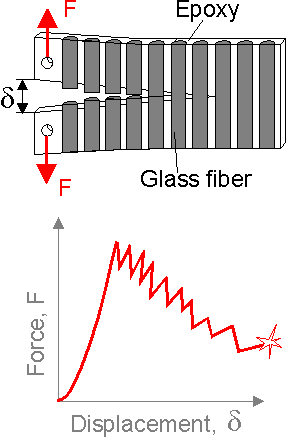 Each fiber breakage is reflected in a peak in the В«force-displacementВ» diagram. The critical force for the first fiber is larger than for others.
Each fiber breakage is reflected in a peak in the В«force-displacementВ» diagram. The critical force for the first fiber is larger than for others.
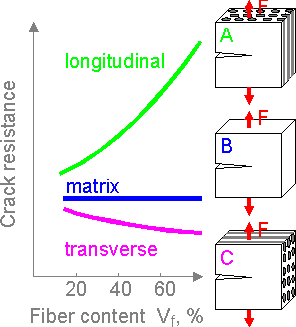 Unidirectional composites have a high crack resistance if the maximum tensile stress acts along the fibers. Tension in the transverse direction demonstrates a crack resistance that is lower than the same parameter for a ductile matrix.
Unidirectional composites have a high crack resistance if the maximum tensile stress acts along the fibers. Tension in the transverse direction demonstrates a crack resistance that is lower than the same parameter for a ductile matrix.
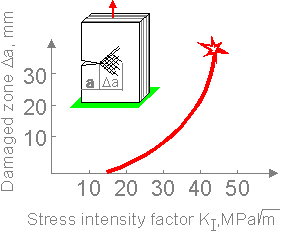 The damaged zone in the crack tip in a multi-directional laminate depends on the stress intensity factor (SIF). The SIF is the driving force in fatigue crack growth equations.
The damaged zone in the crack tip in a multi-directional laminate depends on the stress intensity factor (SIF). The SIF is the driving force in fatigue crack growth equations.
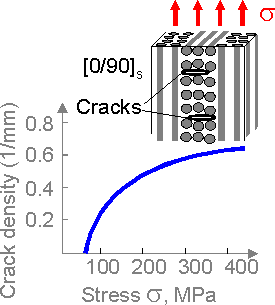 For [0o/90o]s lay-up, the transverse layer is the weakest. It starts to fracture by small microcracking, final failure occurs when the microcracks penetrate the longitudinal layer.
For [0o/90o]s lay-up, the transverse layer is the weakest. It starts to fracture by small microcracking, final failure occurs when the microcracks penetrate the longitudinal layer.
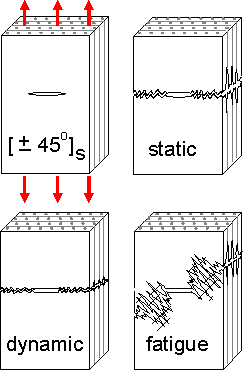 A specimen fractured in a fatigue test has a great deal of debonding and extracted fibers. Microdamage is less if a specimen was fractured at high deformation rate.
A specimen fractured in a fatigue test has a great deal of debonding and extracted fibers. Microdamage is less if a specimen was fractured at high deformation rate.
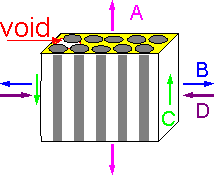 Voids in matrix decrease the strength of unidirectional composites. The effect of strength decrease is highest for transverse tension and shear, lower for tension along the fibers.
Voids in matrix decrease the strength of unidirectional composites. The effect of strength decrease is highest for transverse tension and shear, lower for tension along the fibers.
 2015-08-13
2015-08-13 440
440








